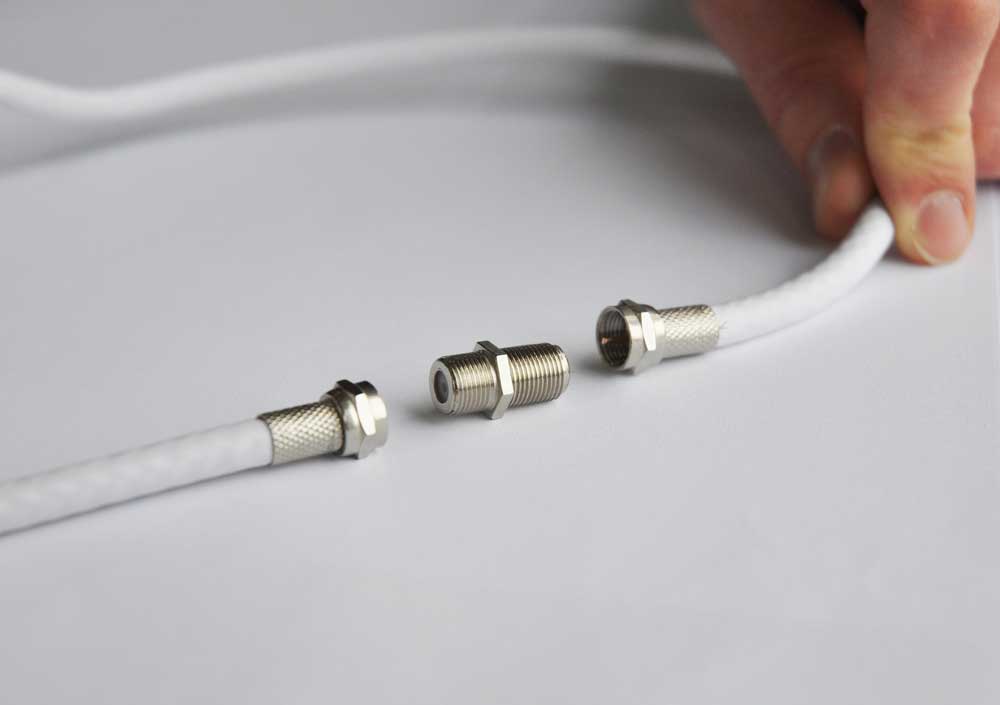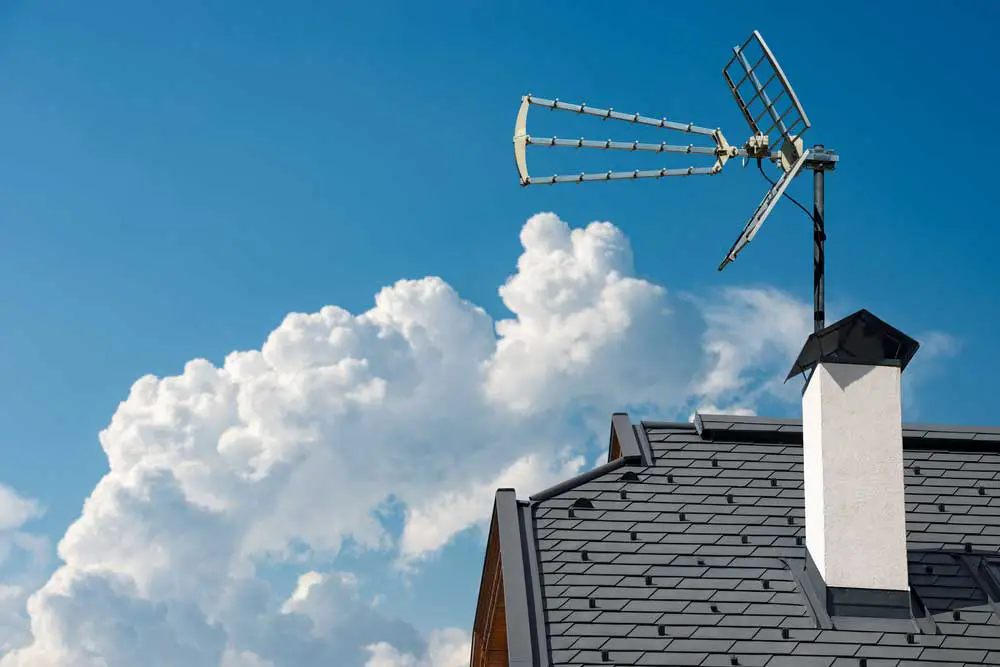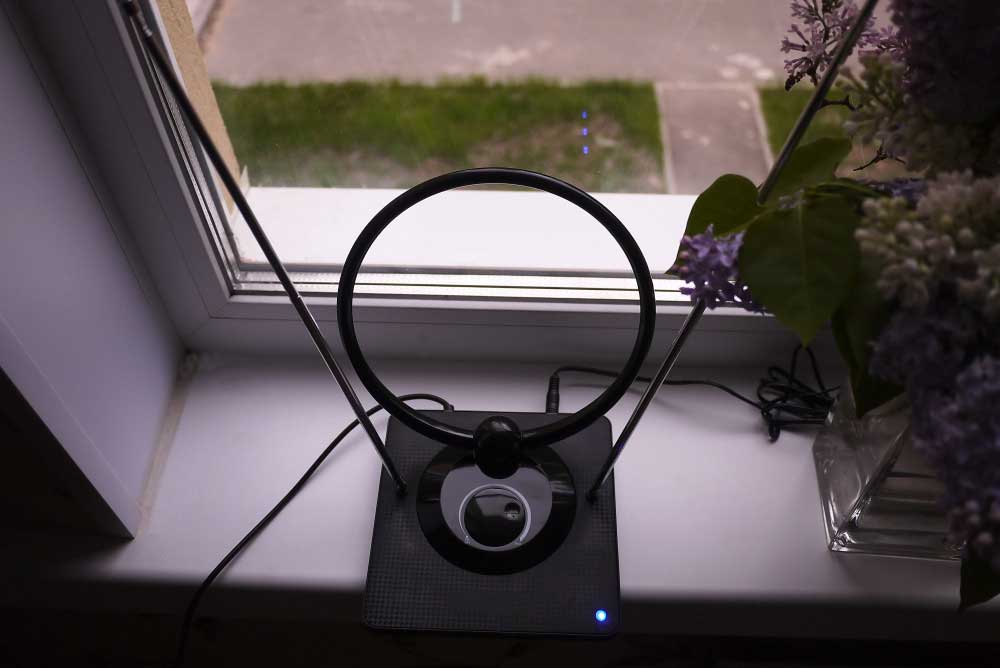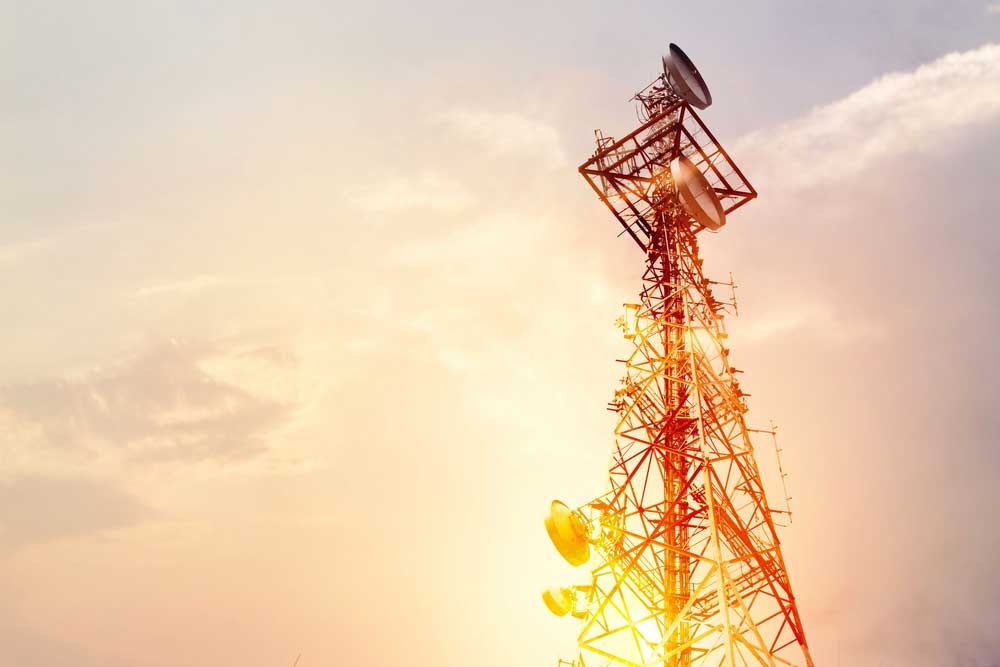So you’ve decided to make the switch from cable to antenna, and are wondering how to set up antenna on Samsung TV.
The good news is it’s not hard to do. Just figure out the kind of antenna you need and connect the TV to the antenna cable.
That said, you could experience difficulty getting a signal or finding channels.
This article outlines all you need to know about setting up an antenna on a Samsung TV.
Also, it explains what to do if you experience any installation-related issues.
Table of Contents
- How to Connect Samsung TV to the Antenna Cable?
- What Kind of Antenna Do You Need for a Samsung TV?
- What to Do If Samsung TV Says No Signal
- How to Get Local Channels on Your Samsung TV
- Why Is My Antenna Not Finding Channels?
- FAQs
- Conclusion
How to Connect Samsung TV to the Antenna Cable?
Even though there are several Samsung models, they all have a similar way of connecting to an antenna.
First, locate the F connector on the TV. Usually, it’s at the back of the TV.
Now connect the F connector to the coaxial cable, ensuring a tight and secure connection.
That way, you avoid damaging the cable wire at the tip of the antenna cable.

(Caption: Coaxial cables and connector)
What Kind of Antenna Do You Need for a Samsung TV?
What’s great about Samsung televisions is that you rarely worry about incompatibility.
Thus, you can use an indoor or outdoor antenna and install an amplified one if necessary.

(Caption: Outdoor TV antenna)
So you have many options to choose from, and each has its pros and cons. It just depends on your needs.
For example, say you live in an area with poor signal quality.
In that case, you want to install an outdoor or amplified antenna.
Then, though convenient and easy to install, indoor antennas are prone to wall interference.
So if you have concrete walls or several walls, an indoor antenna might not work, especially in an area with weak signal quality.

(Caption: Indoor TV antenna)
Also, the number of screens you have in your home determines the need for a distribution amplifier.
What to Do If Samsung TV Says No Signal
A No Signal notification is often a sign that the antenna isn’t working, not the TV. Here are some possible causes of the problem and the solution to each:
Wrong Input
Ensure your TV is set to the correct Input. If you’re unsure how to do it, check the TV manually.
Usually, you need to press the source button on your remote and scroll to Input. Next, go to the TV’s menu and select Air.
Then press OK to search the available channels. Usually, your TV should display the antenna as long as it’s responsive to the signal.
Loose Cables
Check if the coaxial or HDMI cable is loose. Also, check for any visual signs of damage, such as bending or fraying.
Also, you could consider using a different cable to see if the TV responds to TV channels.
Outdated Firmware
Something else you should check is your TV’s firmware, especially if you haven’t updated it in a while.
See, updating firmware improves the TV’s performance. Simply use the self-help guide on your TV to update.
So go to Settings and select Support. After you have clicked on Support, choose Software Update and then click on the Update Now option.
Power Reset
Sometimes, you may need to power reset your TV. Unplug the HDMI cables connected to your TV and all other cables to do this.
Then turn off the TV and unplug the power cord from the source. Now wait 30 to 40 seconds, and then plug it back in.
Also, reconnect all the cables, including the antenna and HDMI cables.
Reset the TV
If power resetting does not get rid of the notification, try factory resetting the TV.
To do so, press Mute, then 1, 8, 2, and then the power button in that specific order.
Now there may be a slight variation in the procedure depending on the model.
But pressing the buttons in this order should generally work for many Samsung TVs.
After this, your TV should display a Factory Reset notification.
When it does, click on that option and wait until your TV turns on automatically.
What resetting does is clear all downloaded information on your TV.
Now you can connect all the relevant cables, such as the HDMI or coaxial cable, and scan for channels.
Weak Signal
Almost always, the issue is that the transmitted signal is weak. When that occurs, the result is reception issues.
So check to ensure your TV antenna is correctly positioned.
See, there are ways you can place your antenna that can result in signal interference.
For example, maybe it’s not high enough, and trees or buildings obstruct a clear line of sight.
Or the antenna is facing a wall or mounted in the basement or garage.
Issues at the Transmission Tower
The issue is beyond your control in other cases because it lies with the transmission tower.
A simple way to confirm this is to check if others in your neighborhood are experiencing a similar issue.
And if that’s the case, you can only wait until it’s resolved at the transmission tower.

(Caption: Transmission tower)
TV Issues
If you’ve tried everything and the problem persists, it’s time to narrow the issue to your TV.
First, check for dust or dirt in the connection ports. Likely, you’ll find that there is, and it’s clogged the ports. So use compressed air and dry cloth.

(Caption: Compressed air can)
However, if nothing works and there’s still no signal, you may need to seek help from a professional or the manufacturers.
How to Get Local Channels on Your Samsung TV
Once you have connected your antenna and changed the source to the correct one, do the following:
- Use the remote to navigate to Settings. Then, select Broadcasting and then Start Auto Program.
- Next, select Air, not Cable. See, the Air option applies if you’re using an antenna and Cable if you’re using a cable box.
Now the TV will search all available local channels. And once it has finished searching, it will display on the screen Close to Finish.
If you find that the channels are much fewer than you anticipated, you can rescan.
Why Is My Antenna Not Finding Channels?
Below are possible reasons your antenna is not finding channels.
Generally, you’ll find that some of the causes for an antenna not finding channels are the same ones for no signal. They include:
- Signal interference: This can be due to obstructions blocking the signal from the local transmission tower reaching the antenna. Also, inappropriate antenna placement.
- Problems with antenna connection: Again, check that the connections are correct and well-fixed.
- Poor reception from the transmission tower. Often, it’s because the broadcasting channels are using a different frequency.
- Faulty antenna or cables: Harsh weather conditions may have caused the antenna to fall and break. Also, check the condition of the coaxial cable for any visible flaws.
- Search the channels manually: If you know the respective frequencies of the channels. Consider searching for them manually. While it can be a tedious process, it will help you determine if the problem lies with your TV or antenna.
FAQs
What TV Stations Can a Smart TV Get With an Antenna
With an antenna, you can get all the stations that provide over-the-air TV. These include ABC, CBS, CW, FOX, and NBC.
Do I Need a TV Antenna With a Smart TV?
Naturally, you may expect that because a smart TV employs the latest technology, it does not require certain devices, such as an antenna.
However, on the contrary, smart TVs lack an inbuilt antenna and you must use an external antenna if you want to switch from cable to antenna.
How do I Improve Poor Reception on My TV?
Thankfully, there are several ways. But first, try changing the position of your antenna.
Move it higher and ensure it points toward the transmission tower.
Also, depending on if you have one or multiple TV screens or other factors, devices like a preamplifier, distribution amplifier, or splitter can improve reception significantly.
Conclusion
That’s how to set up antenna on a Samsung TV. As you can see, it’s not a difficult process, and you can use whichever type of antenna you want, be it an indoor or outdoor one.
Also, it’s important to note that you may run into signal or channel search issues. Thankfully, you now know how to go about troubleshooting these problems.

